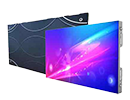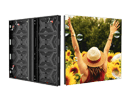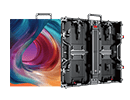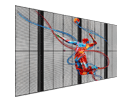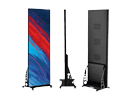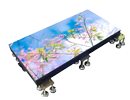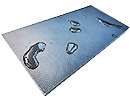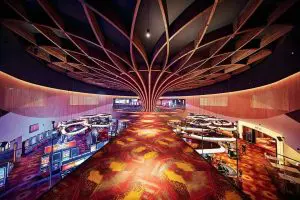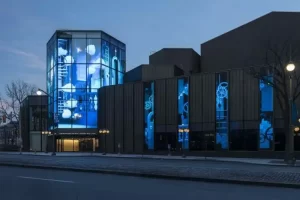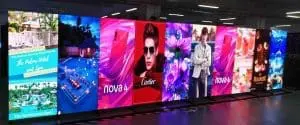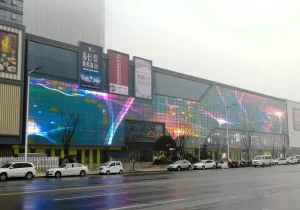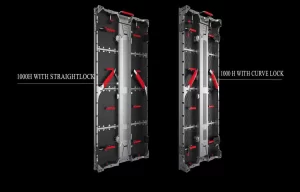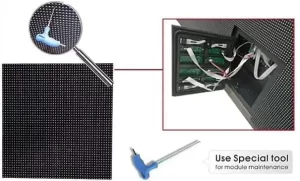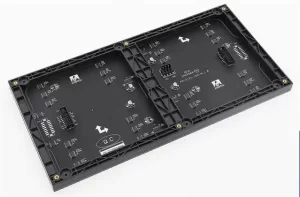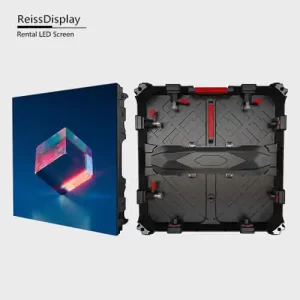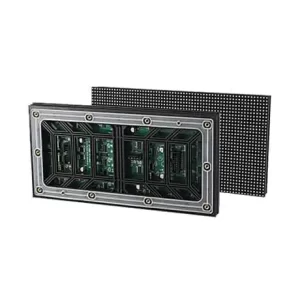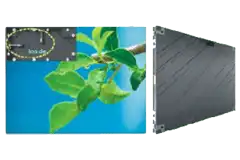LED walls have become essential visual tools across industries—used at live events, in retail, corporate boardrooms, outdoor advertising, and even art installations. But choosing the right LED wall involves more than picking a screen that looks good. The decision affects budget, logistics, image quality, durability, and long-term satisfaction. This guide walks through key considerations—from pixel pitch and brightness to structure, maintenance, and cost analysis—so you can select a wall that aligns perfectly with your goals and venue.
1. Understand Different Use Scenarios
1.1 Indoor vs. Outdoor
- Indoor applications (conference rooms, trade shows, lobbies) benefit from fine pixel pitches (1.2–3 mm) for crisp visuals at close range.
- Outdoor displays (stadiums, building facades, pedestrian plazas) need higher brightness (4,000–6,500 nits) and IP65–IP67 weather protection.
- Carefully evaluate whether the wall will shift between indoor and outdoor use, requiring protective casing and calibration flexibility.
1.2 Viewing Distance and Screen Size
- For close viewing (under 5 m), choose pixel pitches of 0.9–2.5 mm.
- Mid-range viewing (5–15 m) works well with 2.5–6 mm pitches.
- For distant viewers (15 m+), coarser pitch (~6 mm+) can still deliver sharp imaging.
- Match screen size to space and audience numbers; always imagine how content will be viewed during full usage.
1.3 Application Type
- Presentations or video content: prioritize high brightness and flat surfaces.
- Dynamic content (social feeds, live data): choose wall systems with quick refresh, seamless SDK support, and low latency.
- Interactive installations or experiments: consider touch or camera tracking compatibility.
2. Prioritize Display Quality
2.1 Pixel Pitch & Resolution
- Tight pixel pitch provides detail but drives up cost—balance purchase price, viewing distance, and display area.
- A 5 m wide, 2 mm pitch screen totals 2,500,000 pixels (5,000 / 0.002, raised to height); a 3 mm pitch screen has just over 1,100,000 pixels yet uses less budget.
2.2 Brightness & Contrast
- Indoor walls thrive at 800–1,200 nits; outdoor requires 4,000–6,500 nits, with adjustable sensors for ambient light.
- High contrast ratio (e.g. 4,000:1) results in vivid blacks and bright visuals—essential for intense brand moments and presentations.
2.3 Panel Refresh Rate & Color Depth
- High refresh (≥3,840 Hz) prevents flicker in camera recordings and live streams.
- 10-bit or higher color depth ensures accurate hues and smoother transitions. Look for >16 million color support if your content demands vibrant palettes.

3. Build Quality & Durability
3.1 Weather Protection
- Outdoor walls should feature IP65 or higher sealing standards.
- Aluminum frames with anodized or powder-coated finishes resist corrosion and simplify maintenance.
3.2 Thermal and Power Management
- Cabinet fans or heat sinks prevent overheating.
- Built-in surge protection and redundant power loop design help avoid outages.
- In high-heat or dusty environments (e.g., outdoor summer events or construction sites), robust cooling is critical for lifespan.
3.3 Rigid Cabinet Construction
- Extra stacked or curved installations demand rigid construction to avoid warping or image distortion.
- Ensure panels include alignment pins or magnets to prevent seam misalignment over time.
4. Installation and Structural Requirements
4.1 Mounting Options
Choose from:
- Fixed wall mount for permanent indoor installations
- Rigging or fly systems for events and performances
- Ground-supported frames for outdoor billboard or festival use
4.2 Frame Strength and Wind Load (Outdoor)
- Outdoor walls must meet local wind-load and structural engineering standards.
- Pre-engineered frames or professional riggers ensure safe installation in tall or exposed spaces.
4.3 Electrical and Power Planning
- Install dedicated circuits with surge protection and emergency shut-off.
- Pre-wire for daisy-chaining power supplies — avoid overloading a single cable run.
- Factor in backup power options (UPS) to eliminate content cut-outs in key moments.
4.4 Data and Control Wiring
- Wired Ethernet (Cat6a) is reliable for high-resolution walls; fiber is best for ultra-large setups.
- Always plan network and control cable routes to avoid trip hazards or exposure to dust and moisture.
5. Control Systems and Connectivity
5.1 Control Hardware
- LED processors support multi-inputs: HDMI, DVI, SDI, Network, USB
- Some have modular I/O cards—ideal for flexible event setups.
- Features like video-over-IP and smart splitting enable hidden drivers and broadcast-level performance.
5.2 Software and User Interface
- Look for timeline-based scheduling software with room for live switching, fade effects, and on-the-fly edits.
- Modern systems include remote diagnostics: temperature, voltage, pixel count, fan speeds.
- Integration with presentation tools like PowerPoint, Zoom, OBS provides seamless content routing.
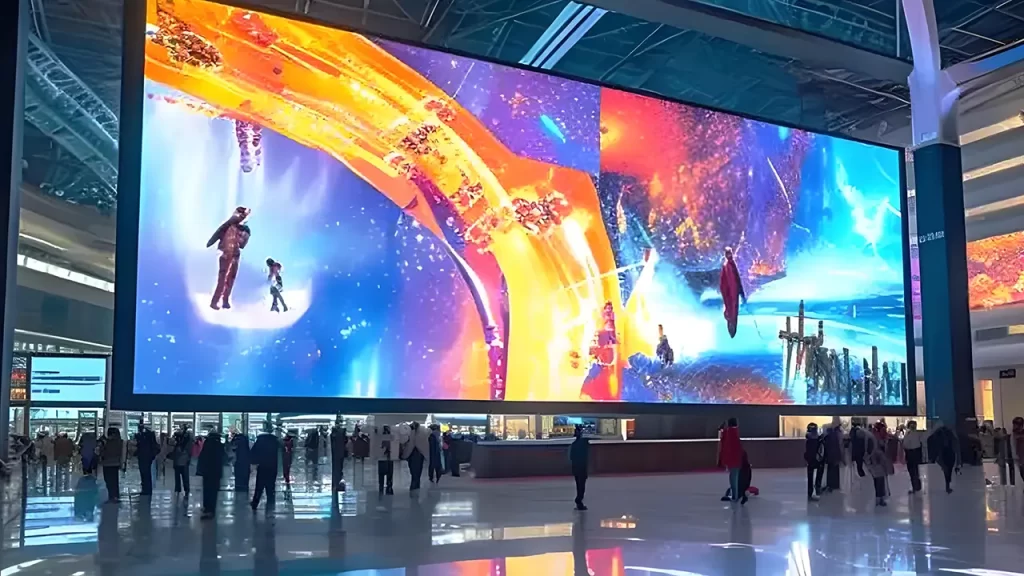
6. Content Requirements and Playback
6.1 Media Formats Support
- Ensure compatibility with common formats: MP4, MOV, Ogg, JPEG, PNG
- Video codecs matter—H.264, H.265, VP9 are common; HEVC for ultra-high definition content.
6.2 Frame Rates and Bitrates
- High frame rates (60 Hz) enhance motion visuals, especially sports or product demos.
- Target bitrates of 8–20 Mbps for quality without stutter.
6.3 Audio Integration
- If your event includes sound, plan speaker placement, amplification, and synchronization alongside visuals.
7. Maintenance and Lifecycle Planning
7.1 Routine Maintenance
- Indoor panels may need only dusting; outdoor screens require cloth or pressure-wash cleaning and seal checks.
- Keep spare LED modules and power cards on-site for fast replacements.
7.2 Calibration and Color Consistency
- Use auto-balancing tools and colorimeter calibration to ensure smooth visuals across panels.
- Calibration should be done at installation and after any firmware or content-profile changes.
7.3 Software Updates
- Keep control software and drivers updated during downtime, not disrupting live operations.
- Maintain configuration backups to quickly restore settings after updates.
8. Warranty, Support, and Reliability
8.1 Warranty Coverage
- Ask for no less than a 2-year warranty on LEDs, panels, and PSUs.
- Verify accessories (control system, connectivity, frame) are covered.
8.2 Technical Support
- Choose providers that offer emergency on-site repair or rapid panel ship-out within 24–48 hours.
- Remote diagnostics and alerts reduce downtime and prevent big failures.
8.3 Upgrade Paths
- Modular walls allow panel upgrades, frame extensions, or resolution improvements as needs evolve.
- Ask about resale or recycling options for replaced modules or upgrade parts.
9. Pricing, Shipping, and Total Cost
9.1 Price per Square Meter
Here’s a breakdown to compare value across model types:
| Supplier Type | Model Example | Pixel Pitch | Indoor/Outdoor | Price per sqm (USD) | Notes |
| Generic online retailer | P3 Indoor Wall | 3.0 mm | Indoor | $850 – $1,100 | Basic panels, limited service |
| Professional rental house | Premium 2.6 mm Wall | 2.6 mm | Indoor/Outdoor | $1,800 – $2,400 (rental) | Ideal for single events |
| Direct manufacturer (recommend) | Vision‑X Pro | 2.5 mm | Indoor/Outdoor | $780 – $950 | Warranty, support, factory direct |
Check the next section for detailed volume pricing.
9.2 Volume Pricing Table
| Model Name | Packaging Type | Pixel Pitch | Price Range (USD) | Notes |
| Vision‑X Pro | 500×500 mm panel | 2.5 mm | $450 – $500 | Factory-direct, high consistency |
| Vision‑X Ultra | 640×640 mm cabinet | 2.0 mm | $680 – $740 | Full calibration, 3-year warranty |
| Vision‑X Outdoor | 500×500 mm cabinet | 4.8 mm | $520 – $580 | High brightness, IP65, rugged housing |
Partnering directly with manufacturing-backed distributors ensures predictable pricing, timely shipping, and ongoing support—helpful if you plan staged growth or repeat events.
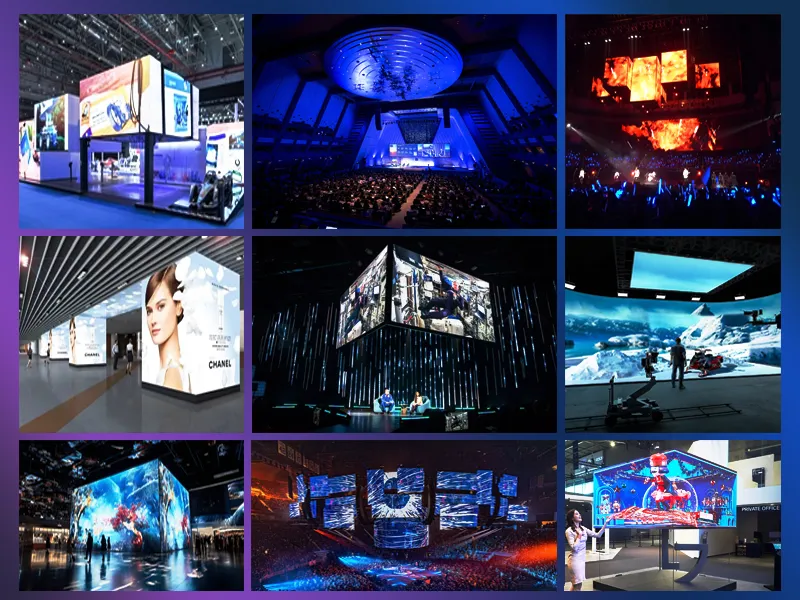
10. ROI, Sustainability, and Efficiency
10.1 Return on Investment
- LED walls depreciate over several years.
- Factor content reuse and multiple events for strong ROI versus single-use projectors or rentals.
10.2 Energy Efficiency
- Choose energy-saving power supplies and use automatic brightness dimming during idle hours to reduce electricity cost.
10.3 Environmental Responsibility
- Reuse panels, repair instead of replace, and work with suppliers offering recycling programs.
- Reduce emission impact in outdoor usage through efficient design and light pollution control.
11. Real-World Examples
11.1 Product Launch
A 4 × 2 m 2.5 mm floor-to-ceiling LED wall provided crisp product visuals and live camerafeeds during an automotive reveal. It included remote content switching and onsite color calibration for flawless presentation.
11.2 Corporate Town Hall
A 10 × 3 m outdoor-rated screen was installed in a courtyard. Linked to campus Wi-Fi and managed remotely, it showed slides and leadership live, automatically dimming at dusk to reduce brightness for neighboring buildings.
11.3 Retail Activation
Mobile rigged walls set up in shopping malls featured high-footfall interactive games and brand messaging. Post-event, panels were reconfigured into an in-store window-screen installation.
12. Final Checklist: How to Choose the Right LED Wall
- Define where and how it will be used: indoor, outdoor, interactive, or fixed.
- Match pixel pitch to your seating/viewing distance.
- Prioritize brightness, contrast, and refresh rate based on venue conditions.
- Check build quality—durability, weatherproofing, thermal management.
- Plan mounting and structural needs—ensure rigging, support, or ground stability.
- Understand control hardware—inputs, software, calibration tools.
- Factor in maintenance—spares, cleaning, software updates.
- Clarify warranty and service level agreements.
- Compare pricing and total cost of ownership, including energy and logistics.
- Test a sample panel, evaluate appearance onsite before full deployment.
Choosing the right LED wall means balancing technical specifications, venue demands, cost, and future flexibility. It is essential to look beyond upfront purchase price and consider lifetime operation, support, calibration, and power usage. By following this structured approach, decision-makers and event planners can invest confidently—knowing they’ll deliver a visually stunning, reliable display solution tailored to their needs. Whether it’s for immersive events, immersive retail, or impactful corporate communications, selecting the ideal LED wall brings creativity and professionalism together—lighting up your space in both form and function.

